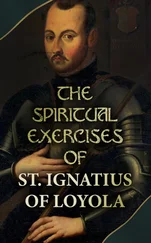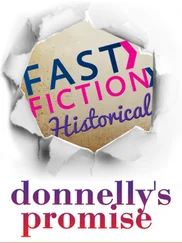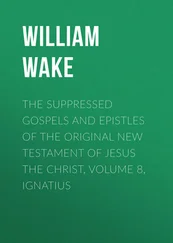Ignatius Donnelly - Antediluvian world
Здесь есть возможность читать онлайн «Ignatius Donnelly - Antediluvian world» весь текст электронной книги совершенно бесплатно (целиком полную версию без сокращений). В некоторых случаях можно слушать аудио, скачать через торрент в формате fb2 и присутствует краткое содержание. Жанр: Старинная литература, на русском языке. Описание произведения, (предисловие) а так же отзывы посетителей доступны на портале библиотеки ЛибКат.
- Название:Antediluvian world
- Автор:
- Жанр:
- Год:неизвестен
- ISBN:нет данных
- Рейтинг книги:5 / 5. Голосов: 1
-
Избранное:Добавить в избранное
- Отзывы:
-
Ваша оценка:
- 100
- 1
- 2
- 3
- 4
- 5
Antediluvian world: краткое содержание, описание и аннотация
Предлагаем к чтению аннотацию, описание, краткое содержание или предисловие (зависит от того, что написал сам автор книги «Antediluvian world»). Если вы не нашли необходимую информацию о книге — напишите в комментариях, мы постараемся отыскать её.
Antediluvian world — читать онлайн бесплатно полную книгу (весь текст) целиком
Ниже представлен текст книги, разбитый по страницам. Система сохранения места последней прочитанной страницы, позволяет с удобством читать онлайн бесплатно книгу «Antediluvian world», без необходимости каждый раз заново искать на чём Вы остановились. Поставьте закладку, и сможете в любой момент перейти на страницу, на которой закончили чтение.
Интервал:
Закладка:
463.) “In England, to this day the new moon is saluted with a bow or a courtesy, as well as the curious practice of ‘turning one’s silver,’
which seems a relic of the offering of the moon’s proper metal.”
(Tylor’s “Anthropology”, p. 361.) The custom of wishing, when one first sees the new moon, is probably a survival of moon-worship; the wish taking the place of the prayer.
And thus has it come to pass that, precisely as the physicians of Europe, fifty years ago, practised bleeding, because for thousands of years their savage ancestors had used it to draw away the evil spirits out of the man, so the business of our modern civilization is dependent upon the superstition of a past civilization, and the bankers of the world are to-day perpetuating the adoration of “the tears wept by the sun” which was commenced ages since on the island of Atlantis.
And it becomes a grave question—when we remember that the rapidly increasing business of the world, consequent upon an increasing population, and a civilization advancing with giant steps, is measured by the standard of a currency limited by natural laws, decreasing annually in production, and incapable of expanding proportionately to the growth of the world—whether this Atlantean superstition may not yet inflict more incalculable injuries on mankind than those which resulted from the practice of phlebotomy.
PART V.
THE COLONIES OF ATLANTIS.
CHAPTER I.
THE CENTRAL AMERICAN AND MEXICAN COLONIES.
The western shores of Atlantis were not far distant from the West India Islands; a people possessed of ships could readily pass from island to island until they reached the continent. Columbus found the natives making such voyages in open canoes. If, then, we will suppose that there was no original connection between the inhabitants of the main-land and of Atlantis, the commercial activity of the Atlanteans would soon reveal to them the shores of the Gulf. Commerce implies the plantation of colonies; the trading-post is always the nucleus of a settlement; we have seen this illustrated in modern times in the case of the English East India Company and the Hudson Bay Company. We can therefore readily believe that commercial intercourse between Atlantis and Yucatan, Honduras and Mexico, created colonies along the shores of the Gulf which gradually spread into the interior, and to the high table-lands of Mexico. And, accordingly, we find, as I have already shown, that all the traditions of Central America and Mexico point to some country in the East, and beyond the sea, as the source of their first civilized people; and this region, known among them as “Aztlan,” lived in the memory of the people as a beautiful and happy land, where their ancestors had dwelt in peace for many generations.
Dr. Le Plongeon, who spent four years exploring Yucatan, says: “One-third of this tongue (the Maya) is pure Greek. Who brought the dialect of Homer to America? or who took to Greece that of the Mayas?
Greek is the offspring of the Sanscrit. Is Maya? or are they coeval? . .
. The Maya is not devoid of words from the Assyrian.”
That the population of Central America (and in this term I include Mexico) was at one time very dense, and had attained to a high degree of civilization, higher even than that of Europe in the time of Columbus, there can be no question; and it is also probable, as I have shown, that they originally belonged to the white race. Desire Charnay, who is now exploring the ruins of Central America, says (North American Review, January, 1881, p. 48), “The Toltecs were fair, robust, and bearded. I have often seen Indians of pure blood with blue eyes.” Quetzalcoatl was represented as large, “with a big head and a heavy beard.” The same author speaks (page 44) of “the ocean of ruins all around, not inferior in size to those of Egypt” At Teotihuacan he measured one building two thousand feet wide on each side, and fifteen pyramids, each nearly as large in the base as Cheops. “The city is indeed of vast extent . . .
the whole ground, over a space of five or six miles in diameter, is covered with heaps of ruins—ruins which at first make no impression, so complete is their dilapidation.” He asserts the great antiquity of these ruins, because he found the very highways of the ancient city to be composed of broken bricks and pottery, the debris left by earlier populations. “This continent,” he says (page 43), “is the land of mysteries; we here enter an infinity whose limits we cannot estimate. .
. . I shall soon have to quit work in this place. The long avenue on which it stands is lined with ruins of public buildings and palaces, forming continuous lines, as in the streets of modern cities. Still, all these edifices and balls were as nothing compared with the vast substructures which strengthened their foundations.”
We find the strongest resemblances to the works of the ancient European races: the masonry is similar; the cement is the same; the sculptures are alike; both peoples used the arch; in both continents we find bricks, glassware, and even porcelain (North American Review, December, 1880, pp. 524, 525), “with blue figures on a white ground;” also bronze composed of the same elements of copper and tin in like proportions; coins made of copper, round and T-shaped, and even metallic candlesticks.
Desire Charnay believes that he has found in the ruins of Tula the bones of swine, sheep, oxen, and horses, in a fossil state, indicating an immense antiquity. The Toltecs possessed a pure and simple religion, like that of Atlantis, as described by Plato, with the same sacrifices of fruits and flowers; they were farmers; they raised and wove cotton; they cultivated fruits; they used the sign of the Cross extensively; they cut and engraved precious stones; among their carvings have been found representations of the elephant and the lion, both animals not known in America. The forms of sepulture were the same as among the ancient races of the Old World; they burnt the bodies of their great men, and enclosed the dust in funeral urns; some of their dead were buried in a sitting position, others reclined at full length, and many were embalmed like the Egyptian mummies.
When we turn to Mexico, the same resemblances present themselves.
The government was an elective monarchy, like that of Poland, the king being selected from the royal family by the votes of the nobles of the kingdom. There was a royal family, an aristocracy, a privileged priesthood, a judiciary, and a common people. Here we have all the several estates into which society in Europe is divided.
There were thirty grand nobles in the kingdom, and the vastness of the realm may be judged by the fact that each of these could muster one hundred thousand vassals from their own estates, or a total of three millions. And we have only to read of the vast hordes brought into the field against Cortez to know that this was not an exaggeration.
They even possessed that which has been considered the crowning feature of European society, the feudal system. The nobles held their lands upon the tenure of military service.
But the most striking feature was the organization of the judiciary. The judges were independent even of the king, and held their offices for life. There were supreme judges for the larger divisions of the kingdom, district judges in each of the provinces, and magistrates chosen by the people throughout the country.
There was also a general legislative assembly, congress, or parliament, held every eighty days, presided over by the king, consisting of all the judges of the realm, to which the last appeal lay “The rites of marriage,” says Prescott, “were celebrated with as much formality as in any Christian country; and the institution was held in such reverence that a tribunal was instituted for the sole purpose of determining questions relating to it. Divorces could not be obtained until authorized by a sentence of the court, after a patient hearing of the parties.”
Читать дальшеИнтервал:
Закладка:
Похожие книги на «Antediluvian world»
Представляем Вашему вниманию похожие книги на «Antediluvian world» списком для выбора. Мы отобрали схожую по названию и смыслу литературу в надежде предоставить читателям больше вариантов отыскать новые, интересные, ещё непрочитанные произведения.
Обсуждение, отзывы о книге «Antediluvian world» и просто собственные мнения читателей. Оставьте ваши комментарии, напишите, что Вы думаете о произведении, его смысле или главных героях. Укажите что конкретно понравилось, а что нет, и почему Вы так считаете.












